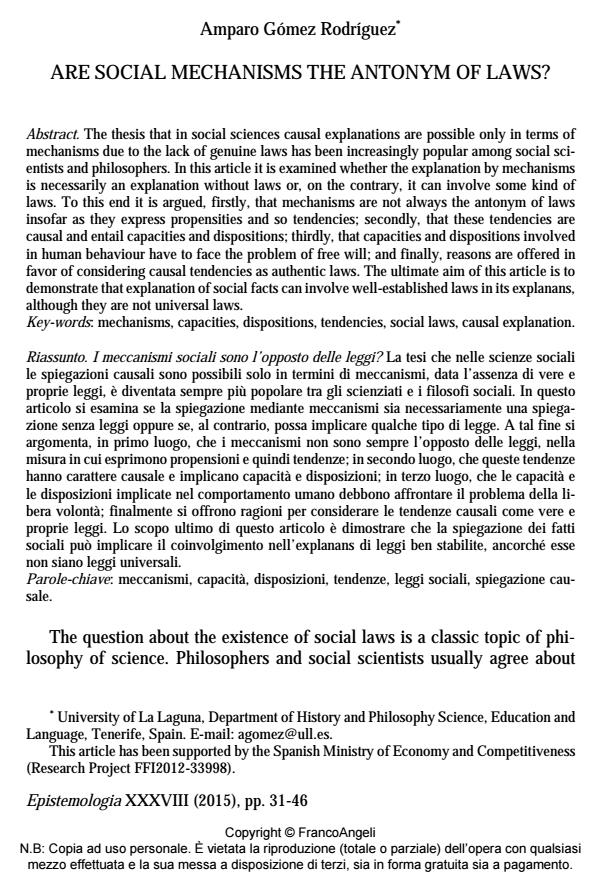Are social mechanisms the antonym of laws?
Titolo Rivista EPISTEMOLOGIA
Autori/Curatori Amparo Gómez Rodríguez
Anno di pubblicazione 2015 Fascicolo 2015/1
Lingua Italiano Numero pagine 16 P. 31-46 Dimensione file 78 KB
DOI 10.3280/EPIS2015-001003
Il DOI è il codice a barre della proprietà intellettuale: per saperne di più
clicca qui
Qui sotto puoi vedere in anteprima la prima pagina di questo articolo.
Se questo articolo ti interessa, lo puoi acquistare (e scaricare in formato pdf) seguendo le facili indicazioni per acquistare il download credit. Acquista Download Credits per scaricare questo Articolo in formato PDF

FrancoAngeli è membro della Publishers International Linking Association, Inc (PILA)associazione indipendente e non profit per facilitare (attraverso i servizi tecnologici implementati da CrossRef.org) l’accesso degli studiosi ai contenuti digitali nelle pubblicazioni professionali e scientifiche
The thesis that in social sciences causal explanations are possible only in terms of mechanisms due to the lack of genuine laws has been increasingly popular among social scientists and philosophers. In this article it is examined whether the explanation by mechanisms is necessarily an explanation without laws or, on the contrary, it can involve some kind of laws. To this end it is argued, firstly, that mechanisms are not always the antonym of laws insofar as they express propensities and so tendencies; secondly, that these tendencies are causal and entail capacities and dispositions; thirdly, that capacities and dispositions involved in human behaviour have to face the problem of free will; and finally, reasons are offered in favor of considering causal tendencies as authentic laws. The ultimate aim of this article is to demonstrate that explanation of social facts can involve well-established laws in its explanans, although they are not universal laws.
Parole chiave:Meccanismi, capacità, disposizioni, tendenze, leggi sociali, spiegazione causale
Amparo Gómez Rodríguez, Are social mechanisms the antonym of laws? in "EPISTEMOLOGIA" 1/2015, pp 31-46, DOI: 10.3280/EPIS2015-001003